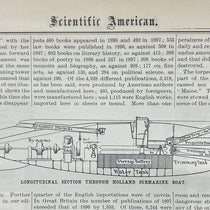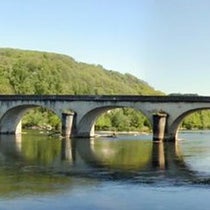Scientist of the Day - William Phillips
William Phillips, an English geologist, printer, and publisher, was born May 10, 1775, in London. Phillips was a Quaker, which meant, among other things, that he was barred from a traditional academic career and, like most Quakers, had to make his way in the field of commerce. Since his father was a printer and bookseller, he chose that vocation, and did quite well at it. In 1796, his pharmacist friend and fellow Quaker, William Allen, founded a discussion group, the Askesian Society, which met in Allen's pharmacy, and of which Phillips and his brother Richard were founding membrs. The Society met only until 1807, when it morphed into several more formally organized scientific societies, including the Geological Society of London (GSL).
I do not know how Phillips became interested in geology and mineralogy, but it seems to have happened at an early age, because by the time of the establishment of the GSL, he was one of the more respected members of the discipline in London, and was a founder and charter member from that first 1807 meeting. He was a valuable asset to the Society, for he became the printer for the GSL, publishing their Transactions, which were large quarto volumes, filled with expensive hand-colored maps and geological sections, so that Phillips took quite a financial bath as Society printer. He apparently did so without complaint. He not only printed the Transactions, he made regular contributions to them, and his 1819 memoir on the cliffs of Dover was especially well-regarded.
Beginning in 1816, Phillips started to publish his own geological texts. His Outline of Mineralogy and Geology appeared that year (he was both author and publisher), followed by A Selection of Facts from the Best Authorities, Arranged so as to Form an Outline of the Geology of England and Wales in 1818. One of the important features of the second book is Phillips’ endorsement of the work of William Smith. Smith had published a large geological map of England in 1815, in which the stratigraphy was deduced from the presence of fossils, rather than from mineralogical considerations. This idea that one could identify rock strata by the fossils they contain was original with Smith, and it would eventually revolutionize geological practice. Smith's map, about 8 feet across, was known to very few outside the GSL until Phillips included a much-reduced copy of the map in his Selection of Facts (first image). In addition to the title page and frontispiece map, we show details from two pages of Phillips’ introduction to his 1818 book (fifth and sixth images), in which he praises Smith, and comments on the usefulness of what we now call the principle of biostratigraphy, the observation that rock strata can be identified by the fossils they contain.
Interestingly, the definitive version of Phillips’ text was published in 1822 in collaboration with William Conybeare, and titled: Outlines of the Geology of England and Wales (seventh image). Since Conybeare had earlier worked with George Greenough to produce a rival geological map of England and Wales in 1819, the 1822 edition of the Phillips/Conybeare book substituted a reduced copy of Greenough's map for that of Smith (eighth image). This did not sit well with partisans of Smith, who felt that Greenough's map was a mere plagiary of Smth’s. But the Conybeare/Phillips collaboration became the standard work on the geology of England until that of Charles Lyell, and Darwin took a copy on the voyage of HMS Beagle. Our copy of the 1822 book, as a stamp reveals (seventh image), was once owned by Thomas Sopwith, who later became well-known for the wooden geological models he made and sold from his London shop.
Phillips died on Apr. 2, 1828, of causes unknown to me. Nor was I able to locate his grave. So all we have is the one portrait, executed after his death, in 1831 (second image).
William B. Ashworth, Jr., Consultant for the History of Science, Linda Hall Library and Associate Professor emeritus, Department of History, University of Missouri-Kansas City. Comments or corrections are welcome; please direct to ashworthw@umkc.edu.














